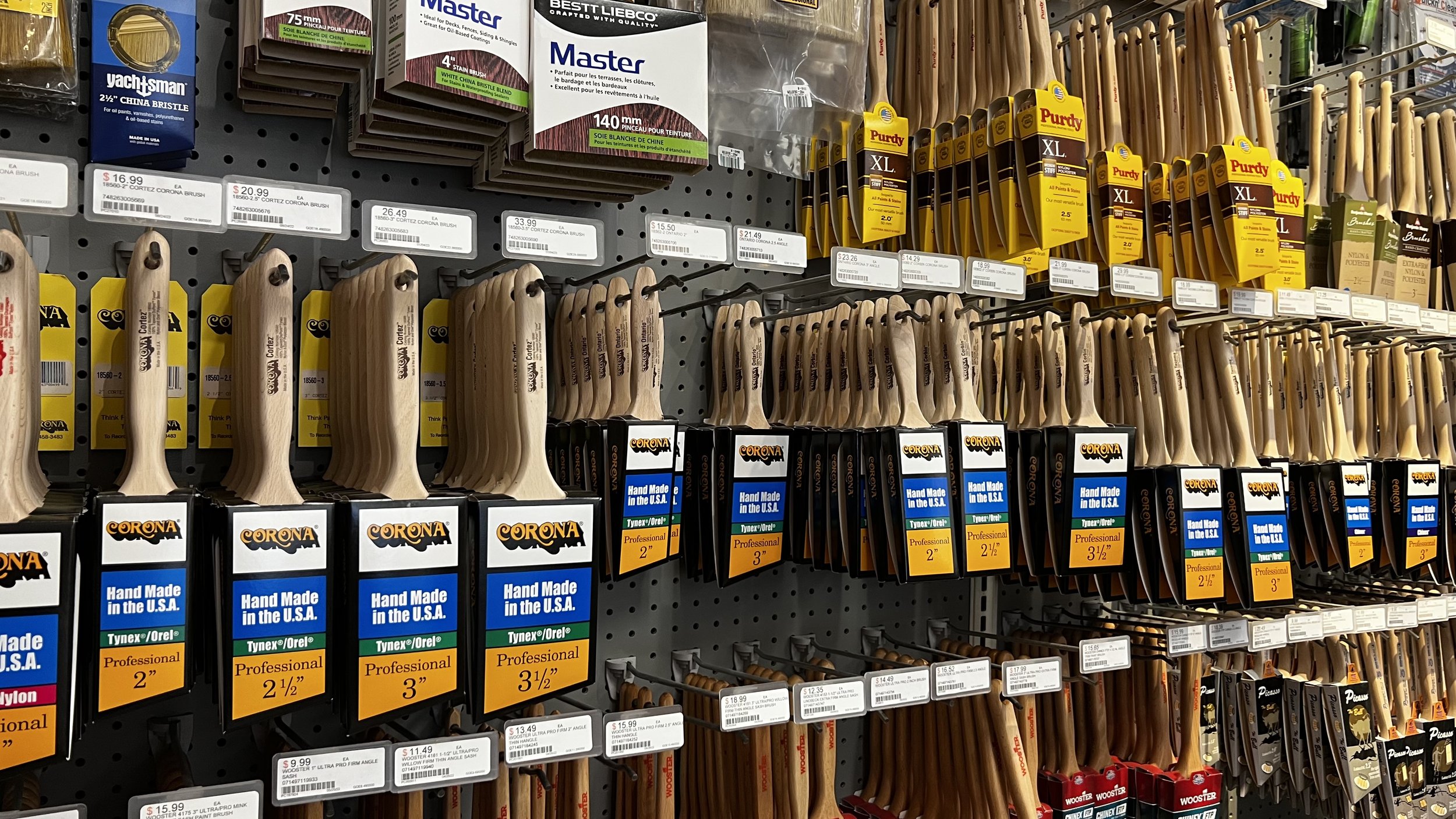House Paint Brushes Demystified
Brushes are a timeless tool. They reach into tight corners, form sharp lines, and don’t spatter like rollers or sprayers.
Quality brushes, that is. Bargain brushes, on the other hand, shed bristles and quickly loose their shape, creating streaks and lumps in your finished project. Painting is time consuming, don’t let your choice of brush derail your efforts.
So, how do you know which brush is right for you? Choose your brush based on the type of paint you will be using.
NATURAL BRISTLES FOR OIL PAINT
(Quick memory aid: Remember oil was the first paint, and natural bristles the first brushes, so these go together.)
Oil paints and oil polyurethanes are best applied with brushes made from the hair of animals.
Natural bristle brushes are easy to spot because they have split ends, just like your own hair. These split ends aren’t a bad thing. They are actually the advantage of natural brushes. They maintain paint at the tip of the brush. Bristles usually come from Chinese hogs or badgers. That’s where we get the term “china bristle.”
Black China Hog Bristle is usually used for rough surfaces like decks.
White China Hog Bristle is softer and leaves fewer streaks, making it perfect for polyurethane.
Badger Bristle brushes are generally more expensive but leave almost no brush marks at all, making them ideal for smooth surfaces.
MAN-MADE BRISTLES FOR LATEX PAINT
Acrylic latex paints go on best with a synthetic fiber brush. (90% of house paint is latex, so if in doubt, assume you are using this kind of paint) These are usually made of nylon or polyester filaments. Synthetic brushes often have white tips, making them easy to identify.
Nylon is extremely durable, making it a good choice for brick. Beware of brushes that are entirely nylon, however, as they can get rather floppy.
Polyester is stiff and shiny. This is what you usually see in bargain bin brushes. They leave a lot of brush-marks and tend to lose their shape quickly.
Synthetic Blend brushes combine the best qualities of nylon and polyester for a durable yet firm brush perfect for most latex (acrylic) paint projects.
WHAT HAPPENS IF I CHOOSE THE WRONG BRUSH?
Using a synthetic brush with oil paint will result is a very stiff application, the bristles will feel as if they are scratching the paint onto the surface rather than allowing it to flow. In addition, when it is time to clean your brush, the thinner necessary to remove oil paint can damage the bristles. With advances in technology, there are now some synthetic brushes that can work well with oil and thinner, but in general most professionals still avoid synthetic brushes for oil paint.
Similarly, using a natural bristle brush for latex/acrylic paint will achieve lesser results. Latex paint contains water, and just as your own hair goes flat when you swim, the animal fibers will be come limp as they absorb paint. Painting with a floppy brush creates lots of extra drips and spatters, making it difficult to maintain a crisp line.
Knowing which brush to choose will help you to get a smoother, more even finish. A quality brush will not only give you a more professional look, it will help you to achieve those results faster, and with less frustration. Although quality brushes tend to cost more, they are more cost effective in the long run, as they work just as well on their 10th project as they did on the first.
At Goedecke Flooring and Design Center we carry everything from the latest technology in paint brushes to classic standards. Come in and let us help you “make your home beautiful, one room at a time.”

